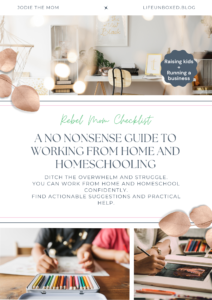I am fighting my child to get him to read. He is a reluctant reader, and it is a battle all the time. Is this familiar to you?
This is something I often hear from other homeschool parents. As someone who loves to read anything, it makes me want to cry when I hear of a parent struggling with a reluctant reader.
Reluctant Reader to Voracious Reader
I was a struggling reader in elementary school. Yes, my recess was always cut short so I could go to the reading intervention classes.
If my school years were judged by these first few years, I probably would have been pegged a mediocre student. Instead of the valedictorian, I was in my Bible school class. Or the almost straight A college student from my some college. When you do school with a bunch of kids at home, while still working, there is going to be a B here or there.
I am also a voracious reader. I determined I would probably have a number of college degrees based on all the reading I’ve done. Even with my lack of time, I still read as a busy mom boss.
Mom be encouraged. If your reluctant reader is struggling right now, it is just a season. This doesn’t have to be his story for his entire educational experience.
I’ve also had to help my own reluctant readers, and there are a few strategies you can use to encourage your child with reading.
Reading is the Foundation for all Learning
Reading is the foundation for all learning. It is the starting point for any subject. I will consider myself a successful homeschool mom, if my kids can read well and understand what they are reading.
It is also the starting place for teaching your kids to be independent thinkers. We can’t teach them everything, but if we can show them how to find the answer to their questions, we’ve done our job.
Reading is the key to unlocking everything.
Understanding Learning Styles to Help a Reluctant Reader
Know thyself. This is most important when it comes to learning styles. We all learn in different ways. There are four dominant learning styles. However, most people are a combination of the styles.
The four styles are visual, auditory, read/write, and kinesthetic.
Don’t try to fit a square peg into a round hole. As parents, we operate in the realm of what we know. It is familiar, and it is what we know. So we apply the same principles to our kids. But if you have a child with a different learning style from you. The same teaching style won’t work.
A few months ago, a mom was lamenting in a homeschool group that her kids didn’t like to read. It was a major struggle. They liked audio books, but she didn’t want them listening to the books. She wanted them to actually read the books.
I confess if I could scream on social media, I would have. This mom was willing to fight every day with her kids to read a book, but they were more than willing to listen to the book. There wasn’t any consideration to her children’s learning styles.
If your child is an auditory learner, then give them every opportunity to listen to books. This may not be a sign of being a reluctant reader, but a sign of his learning style. Yes, they still need to read pages. The practice is necessary. However, encourage them to listen to audio books as well. The advantage to this is they will know how to pronounce words better.
My husband is a dominate audio learner. By his own admission, he takes forever to read a book. He isn’t a reluctant reader, but visual isn’t his strength. He finished his bachelor’s degree with audio books. Yes, you can do college and listen to your textbooks. He used the text-to-speech feature on his Kindle. Since the Kindle was reading the book, he still could bookmark the pages when he needed to cite sources.
Strategies to Help a Reluctant Reader
1. Ignite a love of reading
I know there is an idea in homeschool circles that children shouldn’t read twaddle. Meaning they should always read deep, thought-provoking books. You know books that most children would hate reading.
If you want to ignite a love of reading, then your kids need to enjoy what they are reading. Let them read twaddle! Yes, your kids are going to fight you if you are narrowing their choices to boring books.
The first step to loving reading is to actually enjoy what you are reading. Let your kids read a wide variety of books even if it is twaddle. And to get you started here are 15 Homeschool Books for Winter Reading and 25 Best Christmas Books You Can’t Miss.
2. Rule out learning challenges
Your reluctant reader may struggle because there is a learning challenge. If that is the case, figure out what it is. Once you know, then you can start strengthening your child’s abilities and teaching specifically to their challenge.
3. Tailor learning to fit the learning style
You need to know how your child learns, so you can teach to that style. If your child is an audio learner, then let them listen to a book while following along in the actual book. So they are hearing and seeing it.
This is actually a great way to encourage reading in any child, even if he isn’t an auditory learner. Audio books still count as books. Don’t be discouraged if your kids prefer to listen instead of read. The goal is to get them to fall in love with stories. If that is through audio books, then use them.
4. Read graphic novels
These are the best tool for reluctant readers. I think it is the combination of short sentences, lots of action, and no overwhelming chunks of text.
I had a reluctant reader, and he loved graphic novels. So I bought as many as I could find. He is in high school now and reads without hesitation now. And he is reading large chapter books.
5. Always growing
This is one of those areas that we will always be growing. Our tastes will change, and we will read more complicated books. This only comes when we love reading to start. You can ignite a love of reading, even in a reluctant reader.
We need to enjoy what we are reading, so read wide, read twaddle, read books for no other reason but to get caught up in a story. Read just because you enjoy it.
Conclusion: Ignite a Love of Reading in a Reluctant Reader
This is the one take away you need from this post. Your child needs fall in love with stories first. This is where you start.
You don’t need to things the way they’ve always been done. Add a reading journal to your homeschool and do reading differently.
FAQ: Supporting a Reluctant Reader
Q: What is a reluctant reader, and why might my child be one?
A reluctant reader is a child who shows little interest in reading or resists engaging with books. This reluctance can stem from various factors, such as learning challenges, mismatched learning styles, or negative past experiences with reading. Some children may struggle due to unrecognized dyslexia, visual processing disorders, or simply not having found engaging reading material.
Q: Can audio books really help a reluctant reader? Aren’t they “cheating”?
Absolutely, audio books can be an excellent resource! Listening to stories can enhance vocabulary, comprehension, and a love of storytelling. Far from being “cheating,” audio books cater to auditory learners and can be a bridge to independent reading by helping children connect with narratives without the frustration of decoding text.
Q: How do I identify my child’s learning style?
Observing how your child naturally engages with information is key. Visual learners prefer diagrams, charts, and pictures; auditory learners benefit from hearing information; kinesthetic learners need hands-on activities; and read/write learners excel through written notes and reading. Tools like learning style quizzes and consulting educational professionals can also provide insights.
Q: Why do you recommend “twaddle” books? Aren’t they low-quality literature?
“Twaddle” refers to simple, light-hearted books, often dismissed by homeschoolers aiming for depth in reading. However, allowing children to read books they find enjoyable (even if they seem less “substantive”) helps them develop a positive relationship with reading. Enjoyment fosters engagement, and as they grow, they can transition to more complex texts.
Q: How can graphic novels help with reading skills?
Graphic novels combine visuals and text, which can be more accessible for reluctant readers. They promote comprehension through images, reduce the intimidation of heavy text, and often contain fast-paced, engaging storylines. This format can help build reading stamina and confidence, easing the path to traditional books.
Q: Should I be concerned if my child only wants to read graphic novels?
Not at all. Graphic novels are a valid literary format, and if your child is drawn to them, it’s a great starting point. Reading enjoyment is key, and over time, your child may become more open to exploring a broader range of reading materials.
Q: How can I encourage a reluctant reader who might have a learning challenge?
Start by observing any signs of struggle, such as difficulty with phonetics or slow reading speed, and consider an evaluation if needed. Once a specific learning challenge is identified, you can tailor strategies accordingly—such as using multi-sensory approaches or incorporating more hands-on learning.













0 Comments